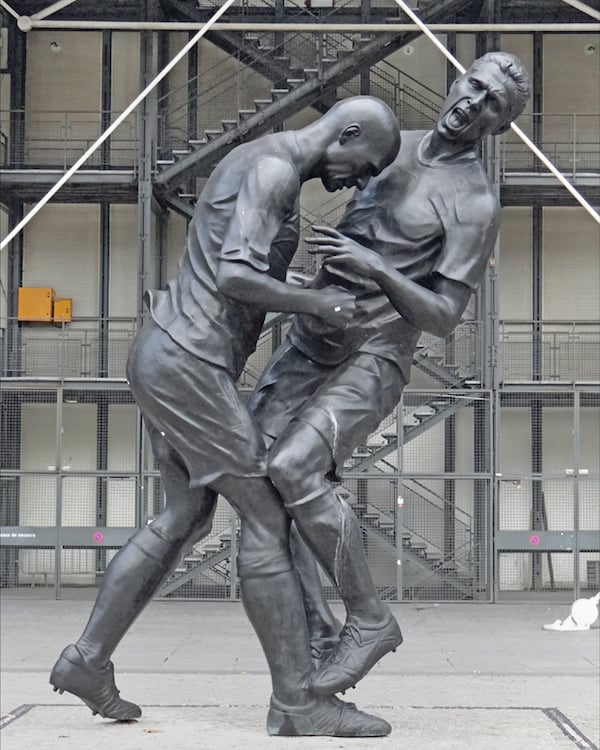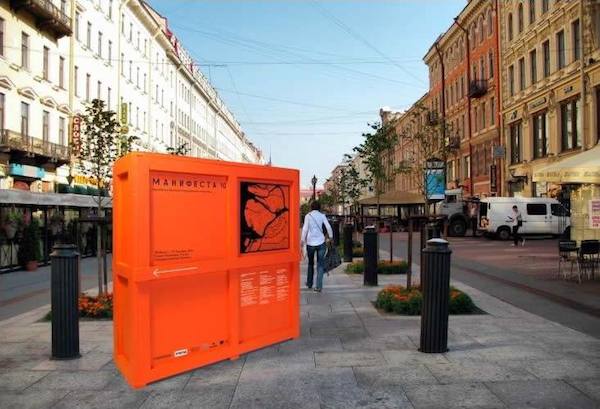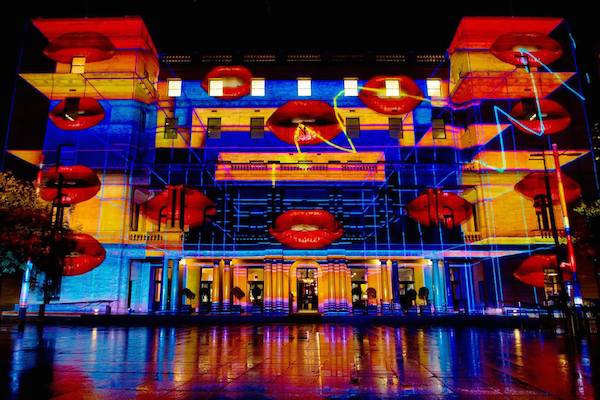Art & Exhibitions
Around the Art World in Six Minutes
From market predictions to Manifesta tell-alls, news you need to start your week.

From market predictions to Manifesta tell-alls, news you need to start your week.

Benjamin Sutton


A Manifesta 10 information kiosk in St. Petersburg.
Photo: Courtesy Manifesta 10.
The Interviews: The upcoming edition of Manifesta opening later this month at the State Hermitage Museum in St. Petersburg is poised to be one of the European biennial’s most controversial outings, and the two men who’ve come under fire the most have given fairly candid interviews. Hermitage director Mikhail Piotrovsky spoke to the Financial Times, offering oblique pronouncements on the place of politics in art like: “Yes, art in general is extremely political… Because it explains to everybody that politics is nothing! Art is much more important. Relations between people are much more important than these political things… Culture has its own rights which [are] different from the rights of the nation and human rights.” Manifesta 10 curator Kasper König is more forthright in his Deutsche Welle interview: “I’m bothered by the Russian tendency of having to come to terms with so many things and by the passiveness. Instead of criticizing, people remain unperturbed. I think it’s unfortunate that things are trivialized and there is no conflict. Conflict would actually be very positive because it could lead to change.” [h/t Hyperallergic]

MOCA Los Angeles.
Photo: kielix/Flickr.
The Profile: The Orange County Register spoke to incoming Museum of Contemporary Art Los Angeles chief curator Helen Molesworth, as well as her new boss, Philippe Vergne, about the challenges of replacing her predecessor, Paul Schimmel. “Filling Paul Schimmel’s shoes is both totally daunting and one of the most flattering things that has ever happened to me,” Molesworth said. “He’s one of the best curators of our time. He not only made his own shows that were so extraordinary, but he helped to make L.A. the art center that it now is.”
The Gentrification Story: It’s a story as old as time, or at least as old as real estate—artists move into raw buildings in a declining industrial area, make it desirable, and are pushed out as landlords and property-owners cash in on cachet—and it’s playing out in a stark and condensed form at 17-17 Troutman Street, a building filled with artists and, until recently, galleries in Ridgewood, Queens. Now the landlord is pushing out galleries and threatening artists, the New York Times reports.

Light projection at Vivid Sydney.
Photo: Kokkai, courtesy Vivid Sydney.
The Eye Candy: The annual Vivid Sydney festival of light-intensive visual and performing arts ends today, but Smithsonian.com has turned some of its most dazzling pieces, projections, performances, and installations into brain-meltingly beautiful animated GIFs.
The Prediction: Following an account of the May 13 evening sale at Christie’s New York that tallied a whopping $745 million, and a reflection on how things have changed since she began covering the art market—when Vincent van Gogh and Auguste Renoir were the kings of the auction ring—Georgina Adam offers an optimistic art market prognosis qualified by countless ifs and buts. “Almost all the huge prices are, however, being made as a growing pool of ultra-rich buyers battles for a small number of brand-name works,” Adam writes. “There is a vast hinterland of good art by creators whose names will never be widely known and whose works will never achieve such heights. The overall trend of the market is upwards, historically, but not for everyone, and not always.”

Adel Abdessemed, Headbutt (2012).
Photo: Jean-Pierre Dalbéra/Flickr.
The WTF: Mark Lonnie, a British art teacher who in 2009 headbutted a student in his class at Wilds Lodge School in Leicestershire—chipping the student’s tooth and bloodying his mouth and nose—was fired from that job but continued to teach for five years, the Independent reports, until education secretary Michael Gove intervened and banned him from teaching.
The Extra-Curricular: Sociologist Tiffany Jenkins tackles the problem of taste in an opinion piece for the BBC, acknowledging arguments by the likes of cultural theorist Pierre Bourdieu and artist Grayson Perry—who see taste as an outdated concept indicative of class difference—while arguing for its renewed importance. “Today, if you were to speak of having good taste you would be laughed at, seen as old fashioned and out of touch, told to ‘check your privilege,'” Jenkins writes. “If art matters, then we should care about quality. And that means having the courage to forge a standard of good taste.”
The Video: Can’t get enough of the kaleidoscopic imagery from the Vivid Sydney light art festival? Neither can we! Here’s footage of projections on the Museum of Contemporary Art‘s façade by the Spinifrex Group.